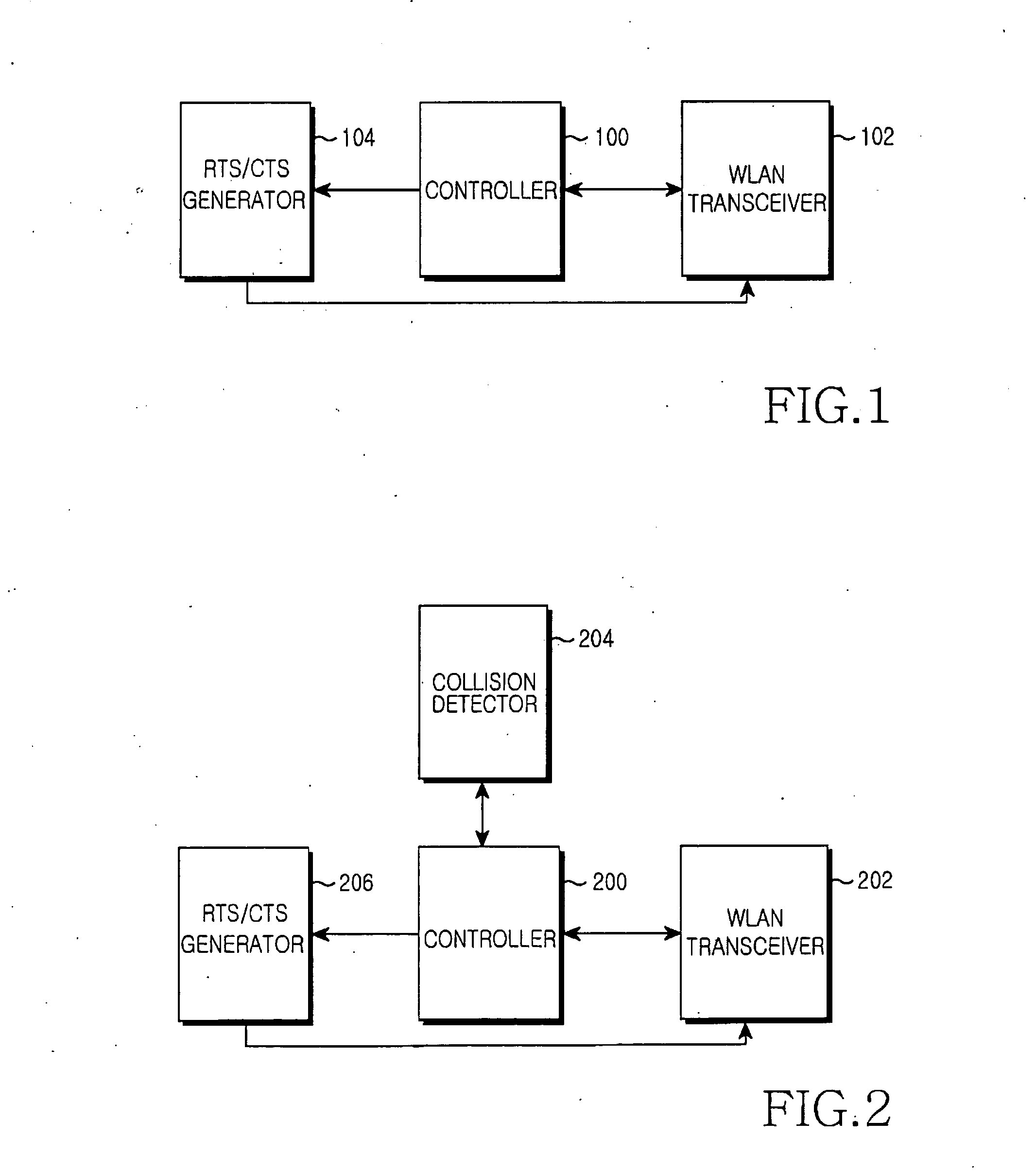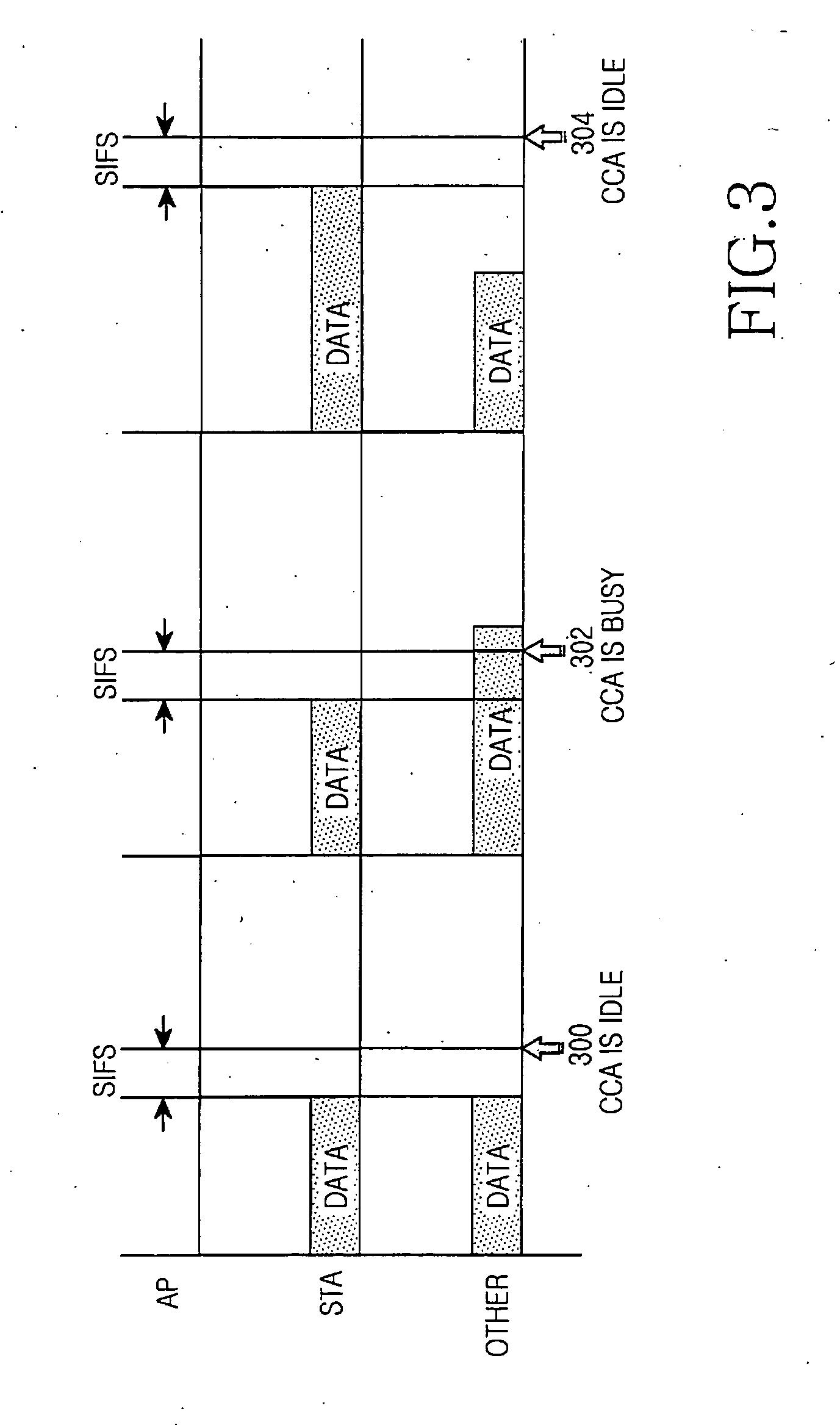Apparatus and method for controlling transmission rate in a wireless LAN
- Summary
- Abstract
- Description
- Claims
- Application Information
AI Technical Summary
Benefits of technology
Problems solved by technology
Method used
Image
Examples
Embodiment Construction
[0029] Preferred embodiments of the present invention will be described herein below with reference to the accompanying drawings. In the following description, well-known functions or constructions are not described in detail since they would obscure the invention in unnecessary detail.
[0030] The present invention provides a WLAN apparatus and method for controlling transmission rate, taking into account collision, in which the cause of a data transmission failure is identified as a channel error or a data collision to thereby reduce a collision-caused rate decrease or a rate increase delay. In the following description, “failure number” refers to the number of data transmission failures and “success number” refers to the number of successful data transmissions.
[0031]FIG. 1 is a block diagram of a WLAN apparatus for controlling transmission rate taking into account collision according to the present invention. Referring to FIG. 1, the WLAN apparatus includes a controller 100, a WL...
PUM
 Login to View More
Login to View More Abstract
Description
Claims
Application Information
 Login to View More
Login to View More - R&D
- Intellectual Property
- Life Sciences
- Materials
- Tech Scout
- Unparalleled Data Quality
- Higher Quality Content
- 60% Fewer Hallucinations
Browse by: Latest US Patents, China's latest patents, Technical Efficacy Thesaurus, Application Domain, Technology Topic, Popular Technical Reports.
© 2025 PatSnap. All rights reserved.Legal|Privacy policy|Modern Slavery Act Transparency Statement|Sitemap|About US| Contact US: help@patsnap.com



